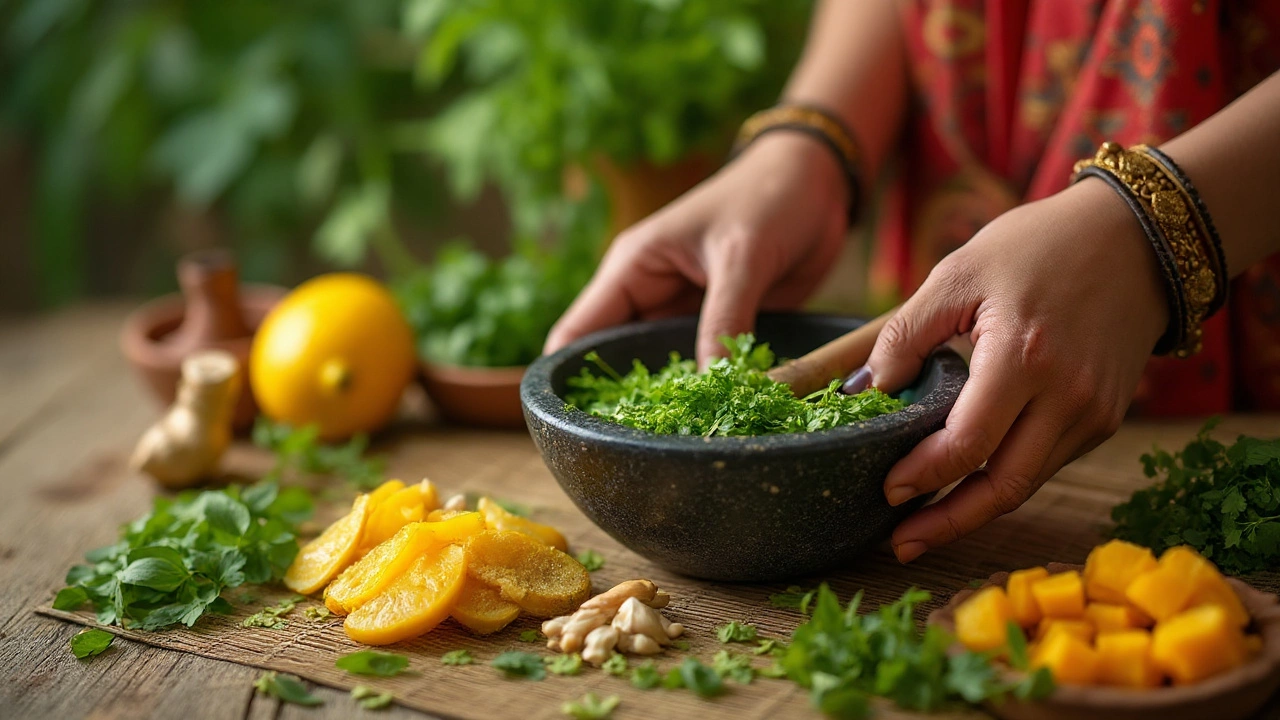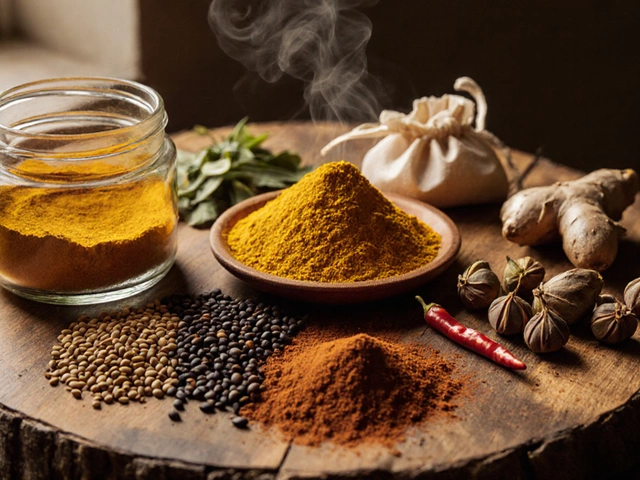Forget ketchup or mayonnaise—chutney is where things get interesting. The first time someone puts a spoonful of that glossy, mysterious stuff on your plate, you probably can’t help but pause. Is it sweet or spicy, tangy or pungent, smooth or chunky, mild or bold? Chutney is a culinary chameleon. No matter where you’ve tasted it—the side of a curry in Mumbai, slathered on bunny chow in Durban, dolloped on a cheese board, or swirled through a wrap—chutney isn’t shy. If you’ve never tried it, you’re probably wondering—what does chutney actually taste like? Let’s break it down so next time that little dish appears, you’ll know exactly what you’re in for.
The Rich Spectrum of Chutney Flavors
At first bite, chutney can be confusing if you expect it to behave like relish or jam. But unlike those, chutney shows off a wild spectrum of flavors, often all at once. Think of it as a flavor bomb that can surprise even the most jaded palate. A classic Indian mango chutney, for example, starts out sweet—the natural fruit sugars hit you first. But then, as you swirl it around your taste buds, other notes elbow their way in: a gentle tanginess from vinegar, a poke of heat from red chili, and a whisper of earthiness from spices like cumin or mustard seeds. The aftertaste? Sometimes, a barely-there hint of sharpness from ginger or garlic, lingering just a second longer.
Not all chutneys are fruity or sweet though. Some, like the bright green coriander-mint chutney, trade sugary notes for herbaceous freshness. Picture biting into a bunch of fresh herbs: crisp, grassy, slightly peppery, with a backnote of citrus if there’s lemon juice involved. Then there’s the fiery red tomato chutney, balancing sour tomatoes with caramelized onions, garlic, and sometimes even coconut or tamarind for a richer, deeper tang. And pickled onion chutney? That’s a party of piquant, almost zesty flavors, with sweetness dancing in the background.
The common thread? Chutney always brings multiple flavors to the table. You’ll rarely encounter a chutney that’s just one thing. That’s why it’s such a staple on Indian thali plates—each tiny spoonful can change the entire personality of your meal. One moment, your taste buds are wrapped in warmth and sweetness; the next, they’re sparked awake by something sharp, cool, or spicy. It’s easy to see why food writers call chutney “palette insurance”—if your curry is too mild, chutney saves the day, but if the main dish is too fiery, a sweeter, cooler chutney can come to the rescue instead.
Key Ingredients That Shape Chutney’s Taste
What’s behind this wild versatility? Ingredients! Chutney is less of a fixed recipe and more of a playful formula. Let’s talk about the cool stuff hiding in your jar. The sweet side of chutney comes from fruits like mango, pineapple, apple, peach, plum, or even dried dates and figs. On the veggie front, you’ve got options like tomatoes, onions, garlic, and coconut. Each ingredient brings its own personality—mango adds silkiness and tropical notes, while onion leans more towards savory, almost meaty sweetness after cooking.
But chutney isn’t just about the main ingredient. Sugar or jaggery (unrefined cane sugar) is often used, especially in the sweeter styles. This layer of sweet balances out everything else—spices, vinegar, salt. Speaking of spices, they’re non-negotiable. Think mustard seeds popping like tiny fireworks, cumin seeds swirling in toasted aroma, or a little coriander powder for brightness. Chili—fresh and bold or dried and smoky—adds punch and fire. Ginger brings zing, garlic grounds the blend, and fresh herbs keep things tasting alive and green.
Acidity matters, too. Vinegar or lemon juice is responsible for that lip-smacking tang that keeps you going in for another taste. Vinegar also acts as a preservative, turning chutney from a tasty extra to a shelf-stable essential. Salt amplifies every other flavor, drawing sweetness from fruit, sharpness from lime, or heat from chili.
The secret weapon? Often, a handful of unexpected extras: roasted peanuts for crunch, curry leaves for perfume, tamarind for sweet-and-sour kick, and coconut for creaminess in South Indian versions. No matter what combo you go for, the result is a layered, complex taste that you just can’t get from basic sauces.

Regional Takes: Chutney Around India (and the World)
If someone tells you chutney always tastes a certain way, they probably haven’t traveled much—or at least haven’t eaten chutney outside their neighborhood. Walk through the streets of Mumbai, Delhi, Chennai, or Durban, and you’ll find chutneys as different from each other as night and day. The secret’s all in local habits, available ingredients, and old-school family traditions.
In the north of India, mango, mint, and coriander chutneys rule. Mint chutney with green chilies and raw mango feels like biting into cold, tart, spicy air. There’s often yogurt stirred in for smoothness—a contrast if you’re eating fiery meat kebabs. Move east, and you might see tomato or date-based chutneys, often tempered with mustard seeds and curry leaves, giving a unique tangy twist. West Bengal’s legendary “kasundi” is a mustard-forward relish that almost punches you with its fire and sharpness—think of Dijon mustard, but amped up with Indian spices.
Down south, chutneys are an everyday miracle. Coconut is usually in the spotlight, ground down with roasted chilies, garlic, tamarind, and fried curry leaves. The taste? Creamy and soft yet bold, with just enough sour and heat to keep things exciting. Tamil Nadu loves its spicy onion or tomato chutneys, while Andhra Pradesh is known for ultra-hot peanut, red chili, or raw mango chutneys that push your spice tolerance to the limit.
Let’s not forget the rest of the world. In South Africa, chutney took on a life of its own during colonial times. Locals adore Mrs. Ball’s Chutney—a combination of peaches, apricots, and secret spices. Its flavor is both nostalgic and bold, with big fruity sweetness followed by a little vinegar tingle—absolutely perfect with everything from curry to boerewors (local sausage). The British version is chunkier, heavy on vinegar and brown sugar, and meant for sharp cheddar or roast meats. And in the Caribbean, mango or papaya chutney gets smoky with Scotch bonnet chilies and allspice berries. Even western brands now stuff jarred chutney with cranberries, apples, and weird flavors like chipotle or ginger lime.
How Chutney Feels in Your Mouth
Texture is half the fun. Some chutneys are silky and almost pourable—you can drizzle them over your food, like sauce. Others are super chunky, thick, or even sticky. A homemade apple chutney might have whole bits of fruit left, offering a soft crunch between bites. Coconut chutney? Often it’s fluffy, light, almost whipped, with gentle bits of coconut that melt away as you chew. Some versions, like a slow-cooked tomato chutney, go jammy and rich.
The way chutney coats your tongue matters. The sugar and vinegar will make your mouth water in a good way. You’ll taste something sweet, and then catch some tartness or heat, as if flavors are revealing themselves in layers—first the fruit, then the spices, then the sharpness, finally a gentle burn if there’s chili. Each bite is a little adventure.
If you’ve ever eaten cheese with a dollop of chutney, you’ll know how the interplay of creamy, salty, tart, and sweet flavors wakes up your palate. On fresh breads, chutney soaks in but doesn’t go soggy. On grilled meats, it adds a glossy finish. And in samosas, a swipe of intense, almost syrupy chutney transforms something simple into a mouthwatering treat. That’s why, outside India, chutney has such a devoted fan base. It lifts, balances, and lights up every bite.

Tips for Using and Enjoying Chutney at Home
If you want to get the most out of your jar—or want to make your own—there are a few tricks you’ll love. First: Don’t just treat chutney as a side condiment. Mix it into yogurt for a quick raita, stir it through cream cheese for a unique spread, or swirl it through cooked lentils for a punch of flavor. Chutney acts like a bridge between bland and bold, so use it wherever you want a pick-me-up—on sandwiches, burgers, roasted veggies, or as a marinade for chicken or lamb.
Watch out for heat. Some chutneys carry a serious chili kick, so taste before you load up. If it’s too spicy, mellow it out with a spoonful of plain yogurt or a little honey. If fresh herbs are used, keep the chutney chilled. Vinegar-based chutneys store longer and actually improve with age, so make a big batch and stash it in the fridge. South African peach-apricot chutney is soul food—try spooning it over charred meats or using it instead of relish on hotdogs.
Don’t skip the texture game. Chunky chutneys are great in wraps and tacos, while the smoother mint or cilantro chutneys make killer dipping sauces for fries, chips, or crunchy vegetables. If you’re feeling bold, use chutney in unexpected places—whisked through salad dressings, mixed into barbecue sauces, or even in curries for a tangy burst. You can even use sweeter chutneys swirled through morning oats or atop pancakes for a twist.
For DIY enthusiasts, here’s a simple recipe trick: toss together chopped ripe fruit (like mango, apple, or even pineapple), a splash of vinegar, brown sugar, fresh grated ginger and chili, a sprinkle of salt, and a handful of your favorite spices (mustard seeds, cumin, and coriander work wonders). Simmer until soft and sticky. Cool, jar, and enjoy—your kitchen will smell like a spice bazaar in no time.
If you’re ever in Cape Town’s Woodstock market, you’ll see food stalls pairing chutney with just about everything—even cheese toasties! Chutney isn’t just about taste, it’s about the story it tells, the meal it makes memorable, and that instant mood lift you get when you hit just the right combo of sweet, sour, salty, and spicy on your plate.











